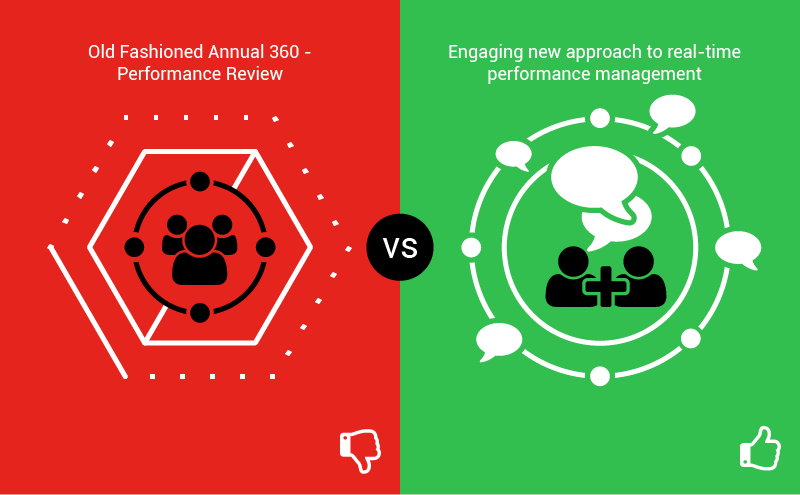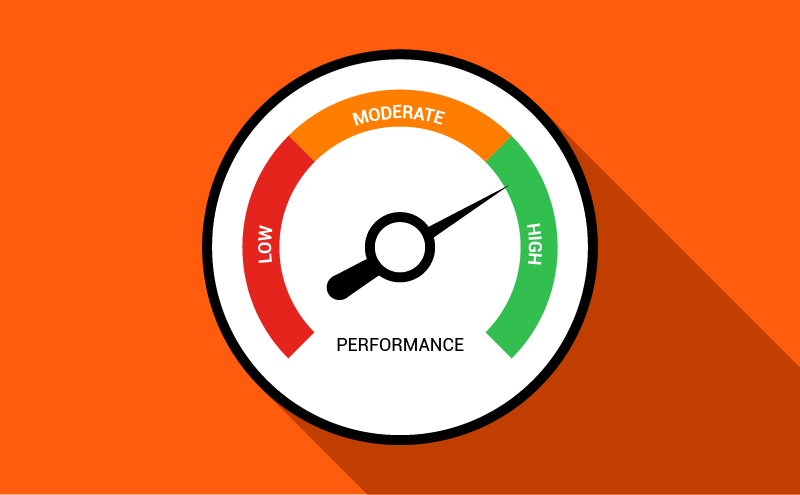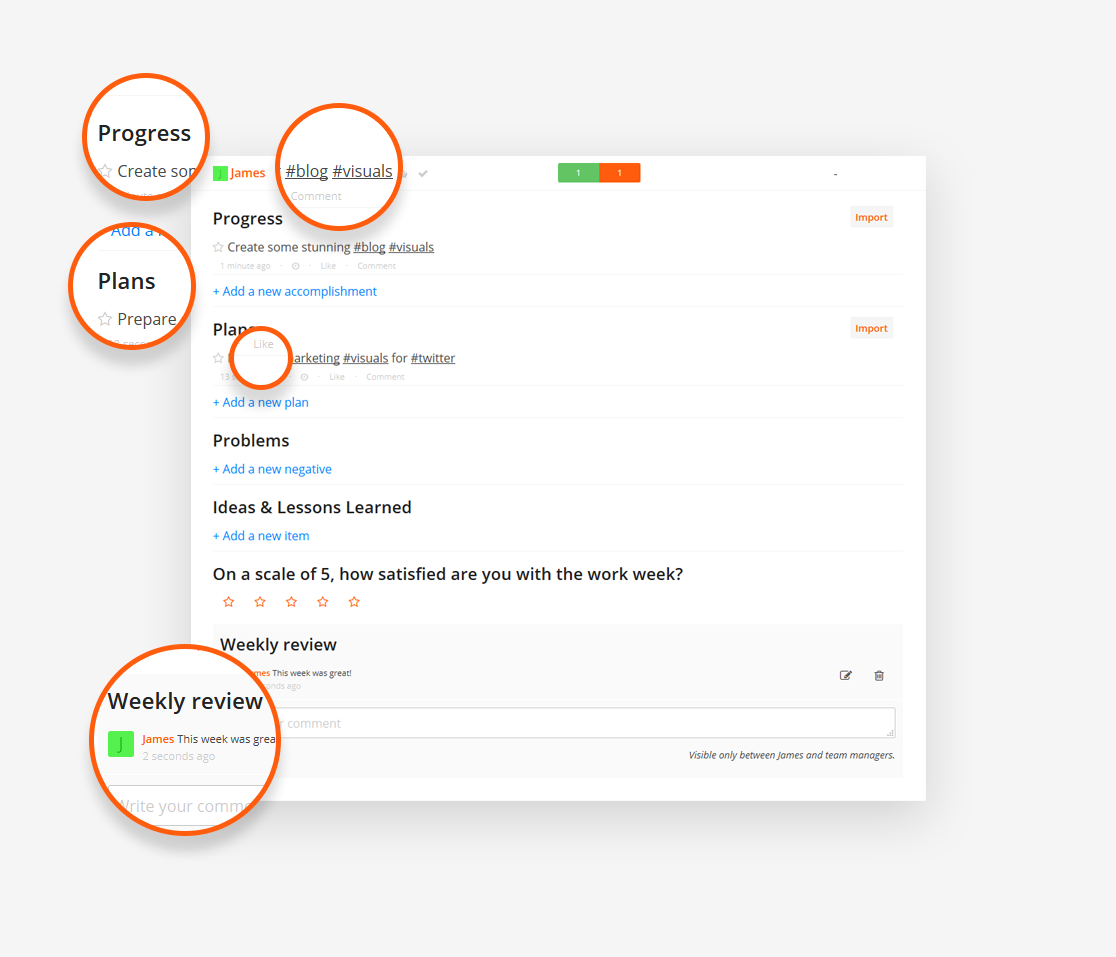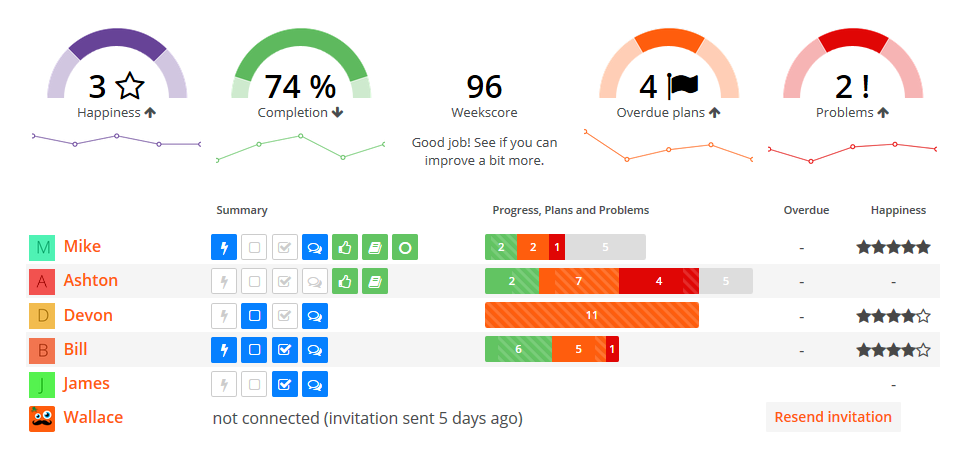Deloitte is the largest professional services network in the world by both revenue and by the number of professionals. In 2013–14, they earned a record of $34.2 billion USD in revenue, so when one of the biggest companies in the world takes on reinventing performance management, they do it with a bang.
Marcus Buckingham and Ashley Goodall described the process and findings of the large-scale Deloitte performance management survey on Harvard Business Review. Today, we're going to examine how exactly Deloitted changed the approach to performance management, and review the practical action items to take from Deloitte’s case study to reinvent our own performance management.
Old vs. new approach to performance management
Deloitte found that their current approach to performance management - annual 360-degree feedback - was wasting a shocking 2 million hours per year. Furthermore, it wasn't engaging employees and the level of performance management was dropping. In an effort to combat that, Deloitte set out to build something much more nimble, real-time and individualized. Something that was focused on fueling the performance rather than assessing it in the past.

Before getting into the new approach, let's take a look at how they came to the conclusion that they need to change. Why? Because, the Deloitte cookie trail has some really insightful crumbs on it.
Before, the goals were set once a year and reviewed once a year. The problem with this approach is that annual goals are too “batched” for a real-time world and a lot of time is wasted on performance ratings. Instead, it should be spent on talking to people about their performance and careers.
Insight: “Shift your performance evaluation focus from the past to the future”
Related Article: 14 Best Tools to Measure Employee Performance
Their next discovery was that assessing someone's skills is subjective and says more about the rater rather than the ratee. That is called an idiosyncratic rater effect.
This discovery left Deloitte puzzled. They knew that in order to get the best feedback, it has to come from an immediate team leader. But how do you deal with the idiosyncratic rater effect?
Insight: "Ratings reveal more about the rater than they do about the ratee."
Before deciding how to deal with biased assessments, let's take a look at another insight Deloitte found. They used the Gallup 1.4 million employee study to see what are the similarities between high and low performing teams.
The most powerful characteristic was that other the high performing team members felt they are doing their best every day. Simple as that. On that basis, Deloitte went from there and identified 60 high performing teams of their own. Furthermore, they did a six-item survey to define their similarities between high performing teams.
Insight: The most powerful commonality between Deloitte's highest performing teams was the belief that "I have the chance to use my strengths every day."

Soon after, the results were in and the most common bit of feedback was that their own high performing team members felt that they had the chance to use their strengths every day. What can we conclude from those results? Deloitte set out a clear goal: “We want to spend more time helping people use their strengths”. As a businessperson- are you focusing on that?
Quick recap. Now that Deloitte was able to recognize the strengths in performance, the question became how to best evaluate it. They also now knew that the best insight comes from the immediate team leader, but how can they do provide it without the idiosyncratic effect getting in the way? That's the million (or even a billion) dollar question.
Insight: “The key is that people rate other people skills inconsistently, but they are highly consistent when rating their own"
We also know that people rate other people skills inconsistently. To combat that, Deloitte did not ask the team member what they think of each team member. Instead, they asked team leaders to rate their own future actions regarding each team member.
Here are the statements Deloitte asked leaders to select about an employee in order to overcome the idiosyncratic effect:
- Given what I know of this person’s performance, and if it were my money, I would award this person the highest possible compensation increase and bonus - this measures overall performance and unique value
- Given what I know of this person’s performance, I would always want him or her on my team - this measures ability to work well with others
- This person is at risk for low performance - this identifies problems that might harm the customer or the team on a yes-or-no basis
- This person is ready for promotion today - this measures potential on a yes-or-no basis
Insight: In effect, they are asking what the team leaders would do, not what they think.
They call this evaluation process performance snapshot rather calling it rating, mainly because it's in real-time. Now they had the system to measure the performance. The question next became - how can we improve it?
Suggestions to reinvent performance management
One factor stood out the most from Deloitte case study - frequency. Deloitte points out that the optimal frequency of these new performance reviews should be weekly. They also suggest that the best way to ensure frequency is to have regular check-ins about near-time work initiated by team members.
Deloitte performance is also getting impact from a consumer technology platform that is designed to be simple, quick and above all, engaging. People tend to be interested in themselves - their own insights, achievements and impact, so they believe that employing such a method would engage an employee around their own performance in a way they had not done before.
 Image via Weekdone
Image via Weekdone
No that we've sorted the reviewing, what about the reviews themselves? The current reality is that most team members are rated on a single number, but Deloitte began to wonder if that was the richest and most simple way of viewing personal performance.
Deloitte says that they have not found the answer yet. From our perspective, team members should get a weekly progress report where there are 4 different indicators that correlate into weekscore. Weekscore takes into account persons happiness, progress, overdue plans and problems. We don't know if this is what Deloitte might be looking for, but it is definitely a step forward in the right direction.

To conclude, Deloitte (and us here at Weekdone) are both of the opinion that traditional, once-a-year, 360-reviews are inefficient and also do not give a transparent view of the current working situation, and it is time to reinvent the performance management process. The best way to do this is by asking the team leaders to assess their team members through statements, which describe what they would do, not what they think.
Employee performance snapshots should be regular, preferably weekly and the technology should be designed to be simple, quick and above all engaging to use.